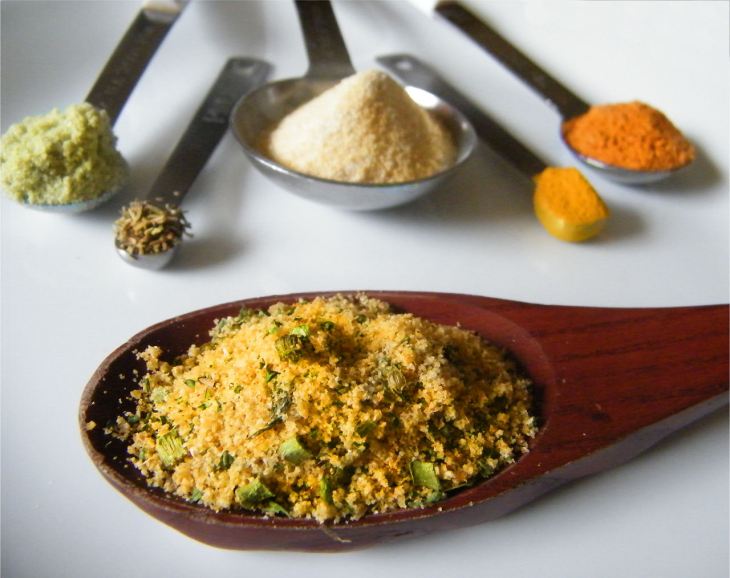I really love sauces with Coconut Milk, but they can be a bit heavy at times. So I tried something new and started this sauce of with a Roux. Not a big amount just enough to carry the sauce to a light, creamy, delicate deliciousness. When the dinner is over you can pat your tummy and feel good without feeling heavy.
I really enjoyed this dish and have had a lot of requests for the recipe, so I really hope you all give it a go and don’t be afraid to cheat a little with coconut based sauces. Enjoy.
Garlic Prawns with Coconut Rice
- 500 gr (1 lb.) Peeled Prawns or 1 kg (2 lbs.) Unpeeled
- 2 small Spring Onions,
- 4 – 5 Baby Corn, sliced at an angle, not too thick
- ¼ bunch of fresh Chives, sliced
- 1 tablespoon Margarine or butter
- 2 teaspoons rounded Plain Flour
- 3 to 4 small cloves Garlic, peeled, finely chopped
- 1 425 gr (15 oz) Can Coconut Milk
- 1 cup Water
- ¾ teaspoon Turmeric
- 2 -3 teaspoons Continental Chicken Stock Powder
- 1 cup heaped, Uncooked Rice, washed
- Salt to taste
- ½ bunch Fresh Chives, finely chopped, extra
Check the prawns for any peels that might be hanging on. If buying unpeeled prawns; remove heads, peel and gut the prawns by removing the gastric tube along the back, make a shallow cut along the back and the gastric tube should be visible, remove.
Finely chop the peeled garlic; finely slice the ¼ bunch of chives.
In a heavy bottomed saucepan wash the rice 2 to 3 times; drain, then add 1 cup of coconut milk and 1 cup of water, add the ½ bunch of finely chopped chives, and salt to taste. Cover and put on medium high heat for 15 minutes, DO NOT lift the lid unless it’s not see through. When all the water has absorbed after 15 minutes and surface looks pitted remove from heat, keep covered and put timer on for another 15 minutes.
Meanwhile in a small frying pan, add the margarine and garlic, cook until fragrant and the garlic has started to brown on the edges, add the flour and cook until foamy, add some water and stir well until looking lumpy add more water and stir until smooth, continue adding water and stirring until the sauce is the thickness of thickened cream. Add the remainder of the coconut milk, turmeric, chicken stock powder, spring onions, baby corn, chives and prawns. Stir well, add salt to taste, you may need extra water, the sauce should be the thickness of pouring cream but no thinner..
When rice timer is over, fluff up the rice with a fork. Serve the Rice and Prawns.







